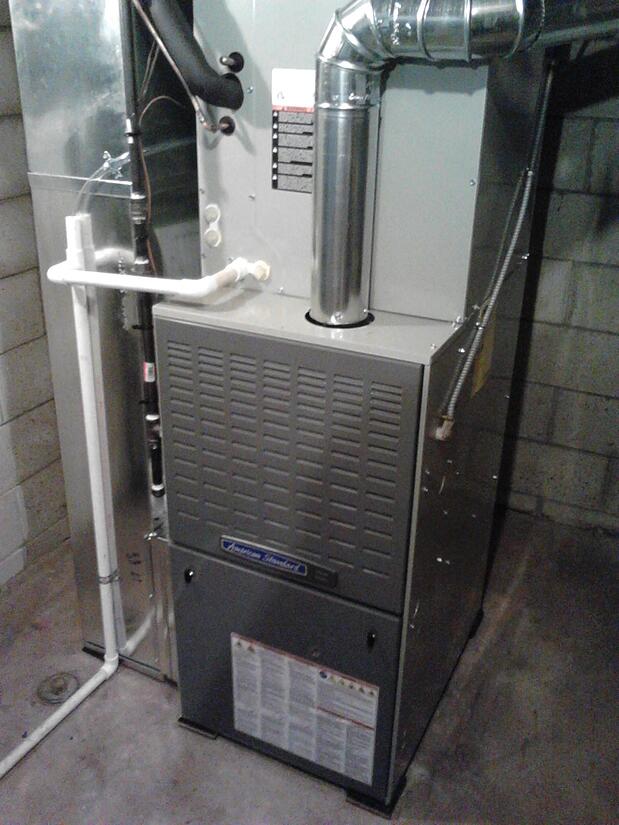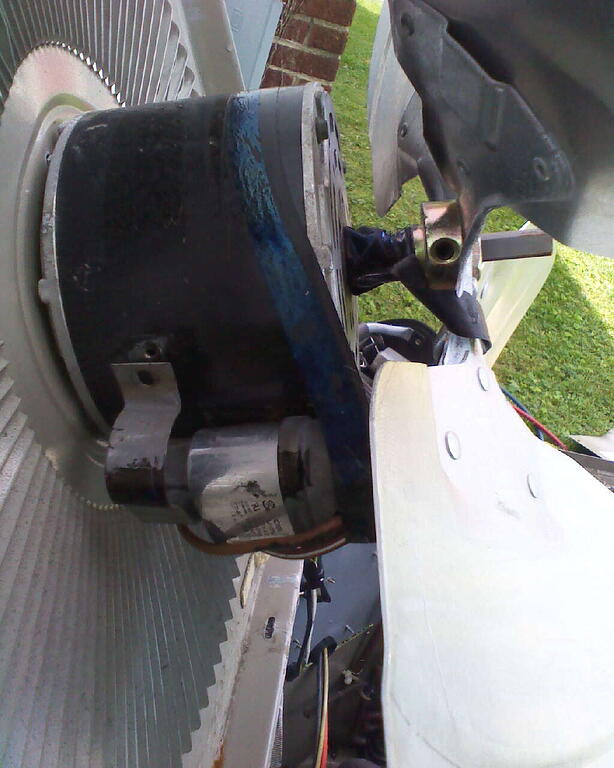
Why furnace maintenance is important! Proper maintenance of your gas furnace can insure that your furnace is operating safely and efficiently. Scheduling an annual preventative furnace maintenance inspection can also reduce the likelihood of costly breakdowns and repairs.
"Out of sight, out of mind." "The squeaky wheel gets oiled." These cliches come to mind when I think about the level of consideration most people give their furnace. I have been in the HVAC trade for over 16 years now, and I know that before then, I never even thought about my heating and cooling equipment until there was a problem. As long as it's doing it's job and not squeaking or making weird noises, it doesn't even come to mind. But we will see why having annual preventative maintenance performed on your furnace is important.
Taking good care of your furnace is not only good for your pocketbook, it's good for your health as well. One of the primary concerns when performing a furnace maintenance check on your gas furnace is inspecting the condition of the furnace heat exchanger. A crack or hole in the furnace heat exchanger can allow combustion products such as carbon monoxide to enter your home. Carbon monoxide can cause drowsiness, headaches, and in some cases death. I highly recommend that you have carbon monoxide detectors in your home.
For more info on carbon monoxide safety click here
http://www.safetyathome.com/home-safety/home-safety-articles/test-your-carbon-monoxide-iq-and-protect-your-loved-ones/
The heat exchanger can be inspected in several ways. Visual inspection with a mirror or videoscope is one way. Also, a trained technician can tell by observing the burner operation. Abnormal burner operation such as "flame deflection" or "flame roll-out" can be an indication that there is a crack or hole in the furnace heat exchanger. Carbon monoxide tests can be performed on the flue gas to determine how much carbon monoxide is being produced and also on the house air stream to see if any is leaking into your home. These are only some of the ways a technician can determine if your furnace heat exchanger is defective.
Another potential source of carbon monoxide can be from a blocked flue. A flue without a cap can allow birds or other animals access to the flue. If they get in the flue, they can create a blockage that can prevent the combustion products produced by your gas furnace and/or water heater from venting properly from your home. Also, most newer homes have a fresh air intake that replaces air lost from your home. Appliances such as gas furnaces, gas water heaters, dryers, bath and kitchen exhaust fans all rob your home of indoor air and create a negative pressure inside which can interfere with the operation of your appliance. Most furnaces have draft safeties and pressure sensors to prevent your furnace from operating if the flue is blocked or if the air pressure in your home is less than the outdoor air pressure. These fresh air intakes usually have a screen that filters the outdoor air that is brought back into the home. If these screens get dirty, they can prohibit the airflow.
A few years back, I had a customer who had an older furnace without draft safety controls. They also had a fresh air intake to balance air pressure in their home. Their carbon monoxide detectors were going off, so they gave us a call. We found the flue was back-venting at the dilution air hood on the furnace creating the carbon monoxide problem. We found the flue to be clear of blockages. It turned out that the only problem was a clogged screen on the fresh air intake. Once we cleaned the screen, the flue began venting properly. Thankfully, they had carbon monoxide detectors in their home. As you can see, there is more than one way a furnace can create a carbon monoxide problem. One thing to take note of, all newer furnaces have draft safeties and flame-roll-out safeties that can shut your furnace down if these type of problems arise. Also, just last year, we removed close to a dozen dead birds from a flue. That furnace was over 20 years old, but had a draft safety which shut down the furnace due to the blockage created by the birds. The furnace was vented into a masonry flue which did not have a flue cap. I have a picture of the birds, but out of respect for anyone who might be eating while reading this, I decided against posting it ;)
The furnace safety controls should be checked to insure that they are operating properly. Most furnaces have the following safety controls : flame rectifying sensor, flame roll-out sensors, high temperature limit switch, and draft pressure and temperature sensors.
Next, we will look at furnace efficiency. Things that can have a negative impact on the combustion efficiency of your furnace include improper gas manifold pressure, insufficient combustion air, too much combustion air, burners out of alignment, dirty burners, and a dirty manifold. Also, a combustion analysis of the flue gas can be performed to determine if you are getting the proper efficiency from your furnace.
Airflow can also affect the efficiency of your furnace. Things that can affect airflow include the furnace filter, blower wheel, evaporator coil, and duct system. In addition to visual inspection of these components, a temperature rise across the heat exchanger to determine if the furnace is operating in the correct temperature range can be an indicator of proper airflow. If the filter, blower wheel, or evaporator coil are dirty, a higher than normal temperature rise can be expected. If the cause of the high temperature rise is not addressed it can lead to big problems in the near future such as : heat exchanger failure, blower motor failure, and/or high temp limit failure.
So far we have discussed the importance of inspecting the furnace heat exchanger, burners, flue, safety controls, and airflow components. There are some other important things to check that can be preventative in nature. These include : ignitor ohms, capacitor capacitance, inducer amperage, and blower amperage readings. Measurements outside of manufacturer's specifications may indicate that now is a good time to address a potential issue.
I could go on, but I think it is fairly obvious at this point that having annual furnace maintenance can prevent breakdowns, improve efficiency, and insure that your furnace is operating safely.
If you would like to schedule a furnace maintenance inspection, you can call us at 614-837-5062.
I hope this blog has been informative.
Thanks,
Jim Harless III








